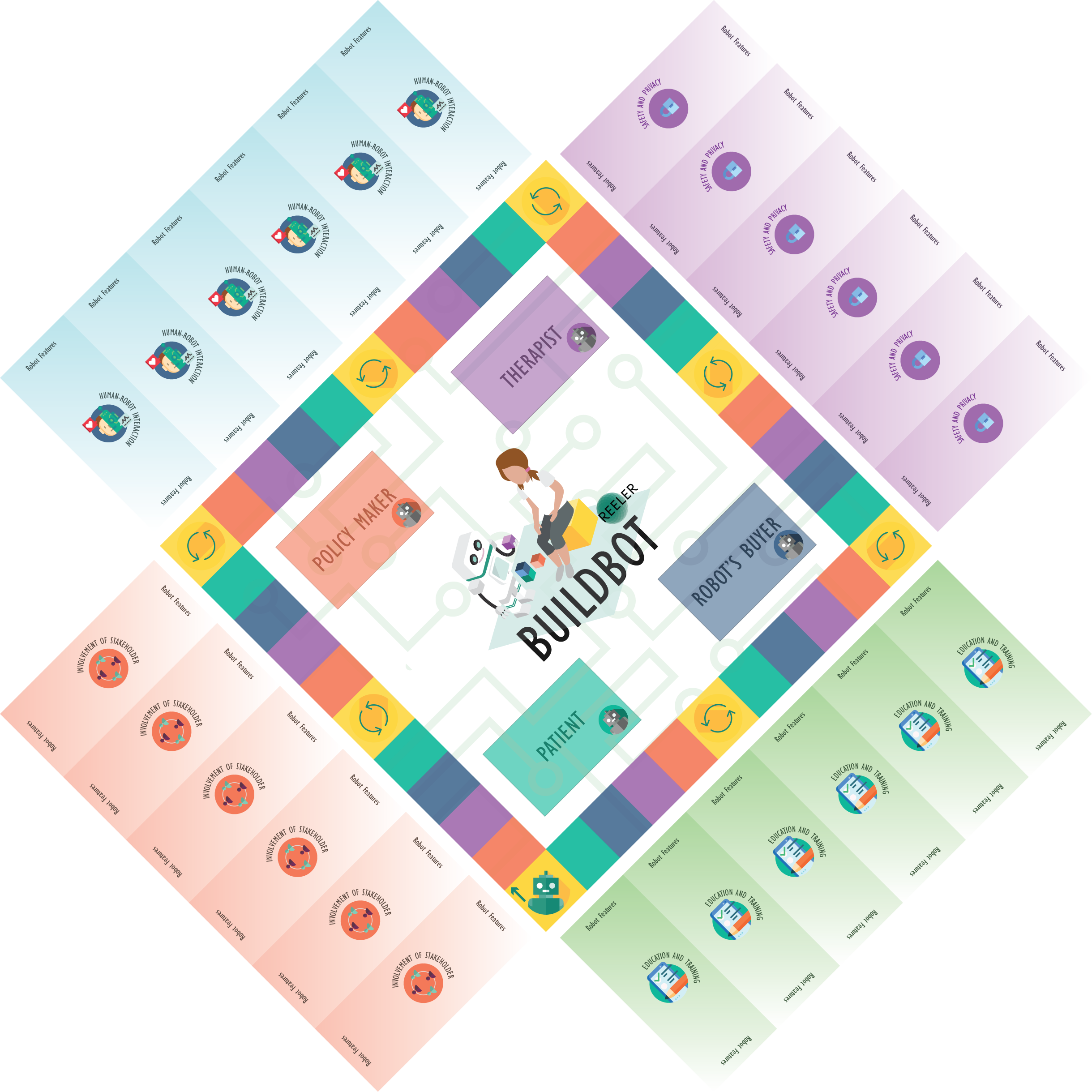Awareness-Raising Toolbox
The Awareness-Raising Toolbox is the outcome of interdisciplinary collaboration in the EU project REELER (Responsible Ethical Learning with Robotics).
Here we present an interactive navigation experience towards raising awareness around ethical and responsible robot design and development.

What is a Robot?
In the REELER project, we limited our selection of robots to machines programmed to sense, move and perform certain tasks. We selected robots to craft 11 cases representative of wide variation identified in the field. The robots within these cases came from all over Europe, across various industries, sectors, and organizations, with various applications and with varying levels of human proximity.
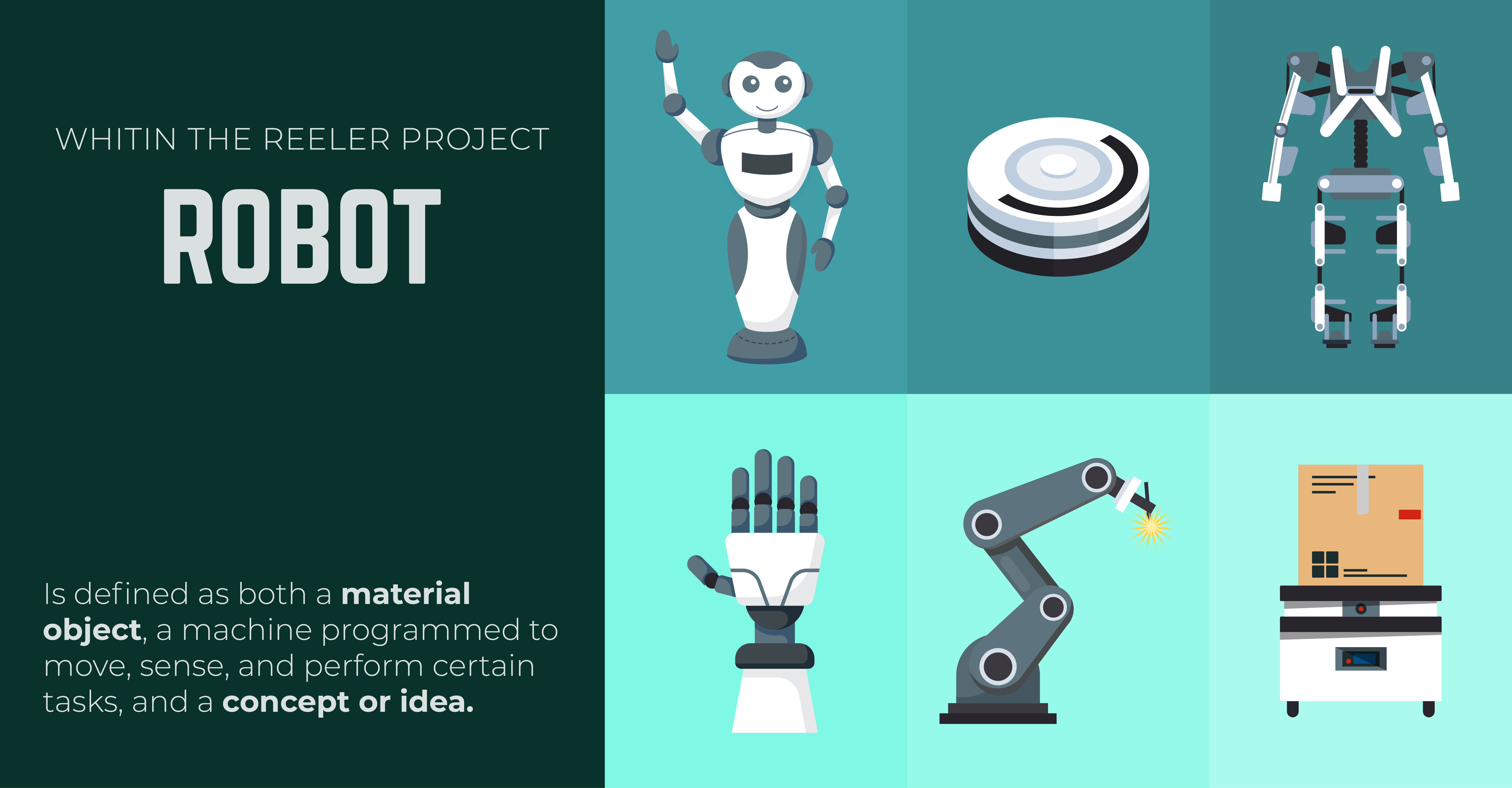
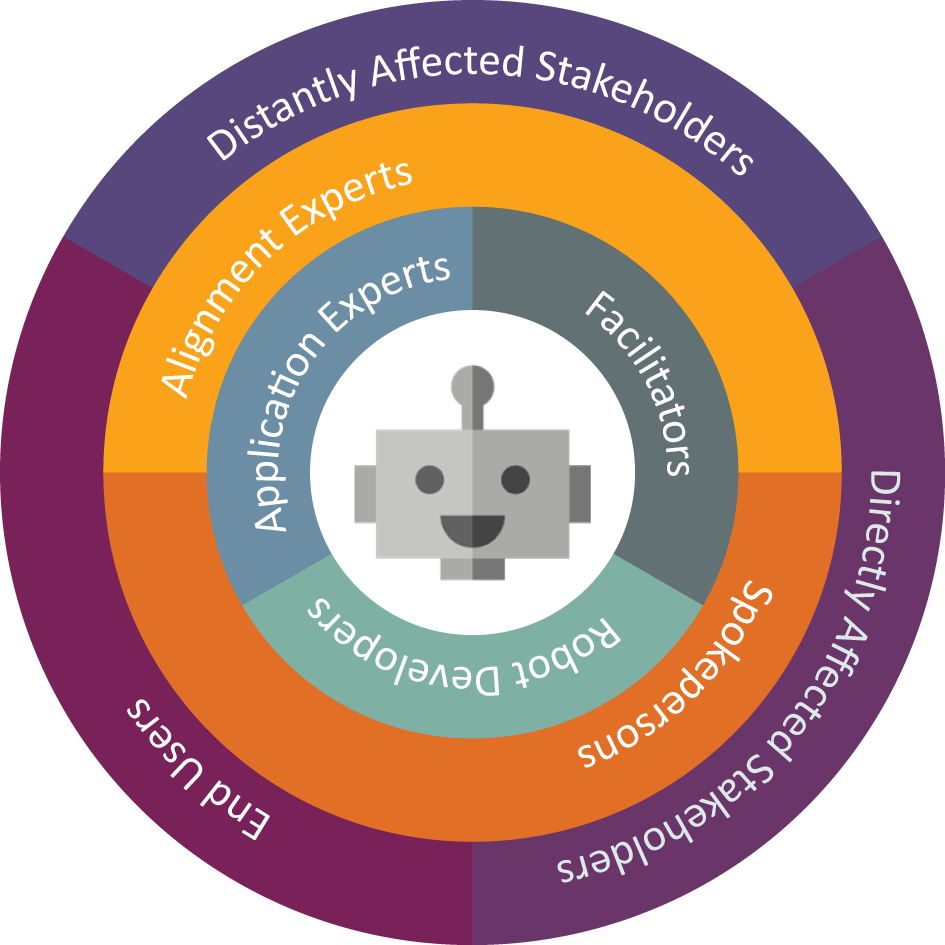
Human Proximity Model
This model was developed within the REELER project to illustrate the different stakeholders involved in robot design and development and the way they collaborate with each other. It will be used across the different topics on this toolbox to illustrate the identified problematics.
Click on the tabs below to know more about the different stakeholders involved and their role in robot design and development.
People directly involved in robot development
Developers: People with technical expertise, whose role is to develop robots in whole or in part (e.g., mechanical engineers, computer scientists, industrial designers).
Facilitators: Decision-makers whose role is to set the framework for development. This includes people with legal, regulatory or bureaucratic expertise (e.g., funding bodies, or regulatory agencies), but also persons who otherwise facilitate the funding, access to market, or testing (e.g., lawyers, investors, marketing, or public-relations persons).
Application Experts: People with an expertise in the application area or sector particular to the robot development. They have a role in sharing their expertise in the development of the robot and are often robot buyers (e.g., a contractor or building developer for a construction robot, or a dairy owner for a milking robot).
Those acting as go-betweens or middle-men for robot makers (especially developers) and robot recipients (affected stakeholders and end-users)
Spokespersons: An intermediary who speaks on behalf of recipients based on their own experiences. Often these people are management level in the same organization as the end-users. (e.g., the factory owner speaking on behalf of the workers).
Alignment Experts: Intermediaries working to align robot makers and affected stakeholders, based on empirical knowledge of both. Often these people can have an expertise in Social Sciences or Humanities (SSH) (e.g., an anthropologist or ethicist).
Those who may use robots or be affected by robots, directly or distantly.
End-Users: People who will use (operate or interact with) the robot directly (e.g., a patient using a rehabilitation robot, a machine operator at a factory, or a consumer using a robotic vacuum).
Directly Affected Stakeholders: Non-users who encounter the robot and are affected by it. (e.g., a family member assisting patient with use of a rehabilitation robot, or a nurse interacting with a cleaning robot).
Distantly Affected Stakeholders: People who will likely never operate, use, or interact directly with the robot, but may nevertheless be affected by it. (e.g., a physiotherapist made superfluous, a farmworker on a traditional farm in Southern Europe in relation to a precision-farming robot in Northern Europe).
Content Overview
This Awareness-Raising Toolbox is composed by eleven topics, that can be splitted in two sections. The first section, "While Developing", aims at embracing an ethical and responsible approach towards robot design and development. The second section, "Beyond Development", contains topics that don't necessarily impact development itself, but might interest you!
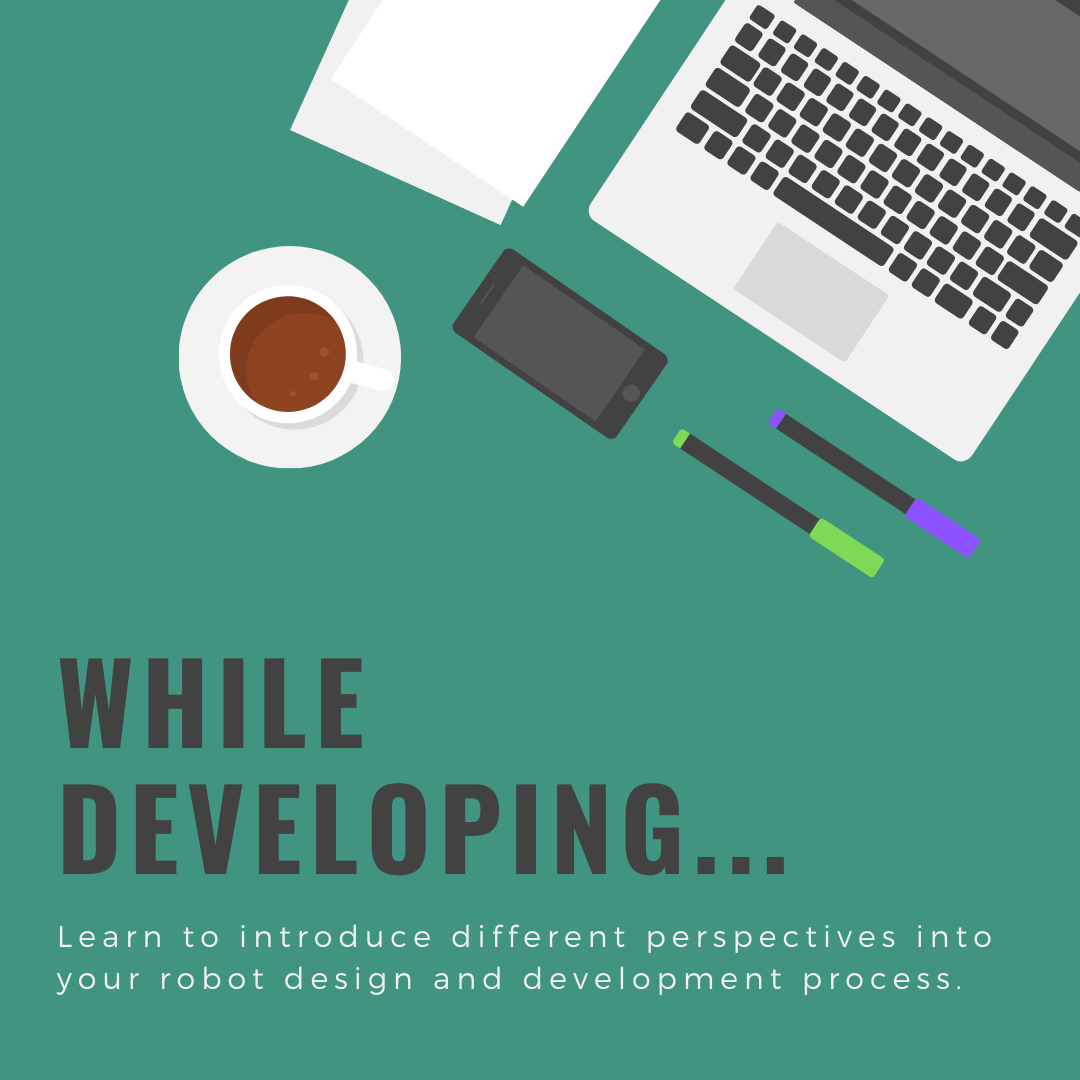
- Robot Beginnings: Learn about what drives robot design and development. 4 min read.
- Collaboration in the Inner Circle: Does interdisciplinarity impacts research and development? Find out here. 3 min read.
- Ethics Beyond Safety: Learn about the role of ethics in the context of research and development. 4 min read.
- Inclusive Design: How to enhance your design and development process? Read more here! 5 min read.
- Innovation Economics: Go deep into innovation economic systems around research and development. 5 min read.
- Learning in Practice: Robotics imply an ongoing learning process. Find out how and who. 4 min read.
- Economics of Robotization: Learn about what comes after the introduction of a robot on a large-scale. 5 min read.
- Imaginaries around Robots: Find out what are common perceptions of robots among different people. 4 min read.
- Meaningful Work: Learn how robotization impacts work organization. What should you consider? 5 min read.
- Gender Matters: Go deep into the gender issues within robotics culture. 5 min read.
- Human Proximity: Learn to better align different perspectives towards close collaboration. 4 min read.
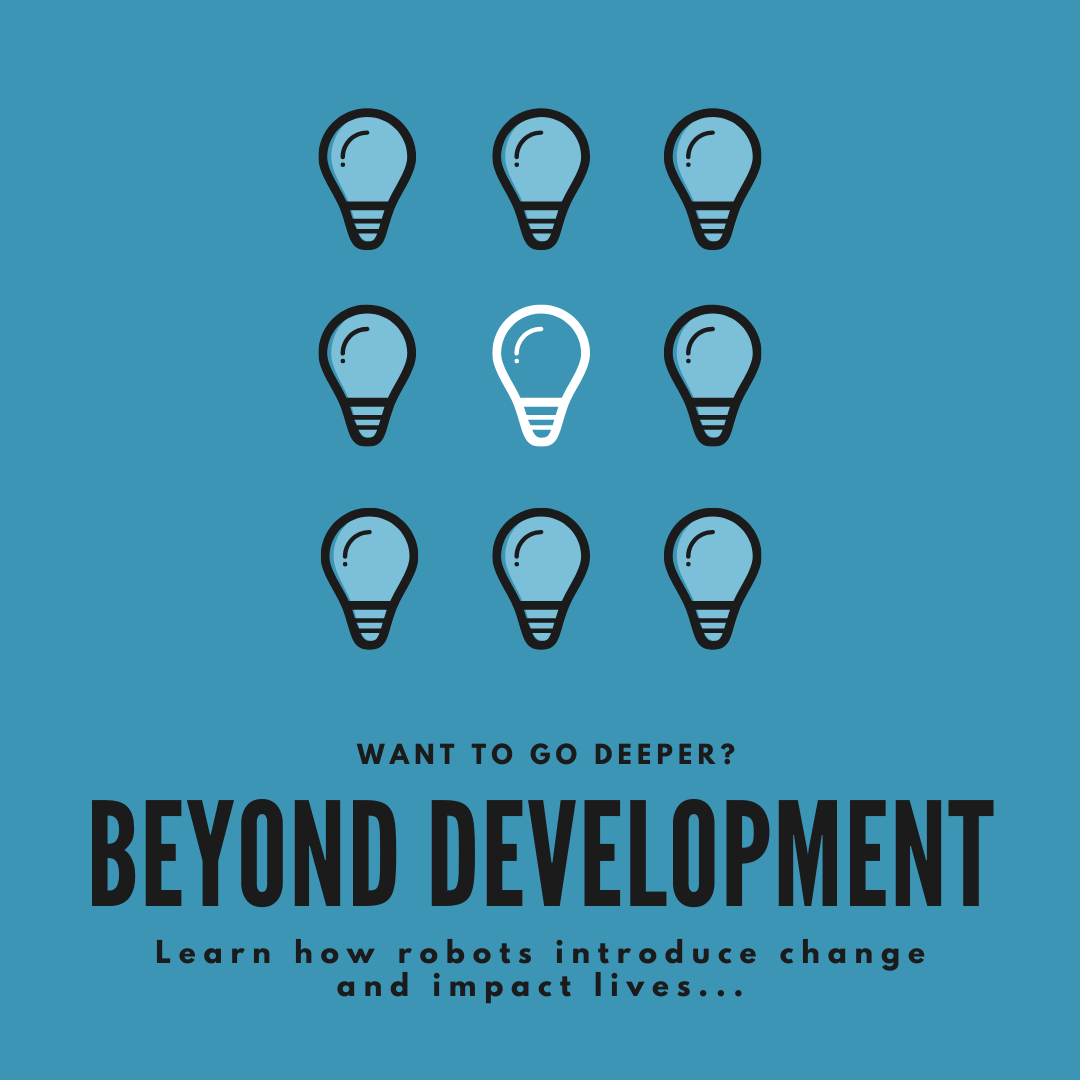
How to Navigate
Follow the arrows to go through the linear navigation path described in the Content Overview
Go To: Previous Page
Go To: Next Page
Go through our recommendations at the end of each page
Related Topics
By going over each icon with the mouse you will get a brief description of the corresponding topic.
Look for these icons to go deeper into our learning material
Key Concepts
Key Concepts: Here you will find the key terms addressed in each topic and the corresponding definitions.
Giving Voice
Giving Voice: Here you get to listen to affected stakeholders from REELER's case studies.
Reflection Points
Reflection Points: Here you get to question yourself and your design practices as you go through each topic.
Or go through our topics as you wish, according to your personal interests...
Learning Resources
BuildBot is a board game developed to raise awareness about the complexity of a robot's context and to expand development considerations beyond the technical matters.
The game include stakeholder statements, taken from real REELER's case studies, that give robot developers the possibility to assess, and consider the concerns and needs of others across the human proximity model during the robot development process.
